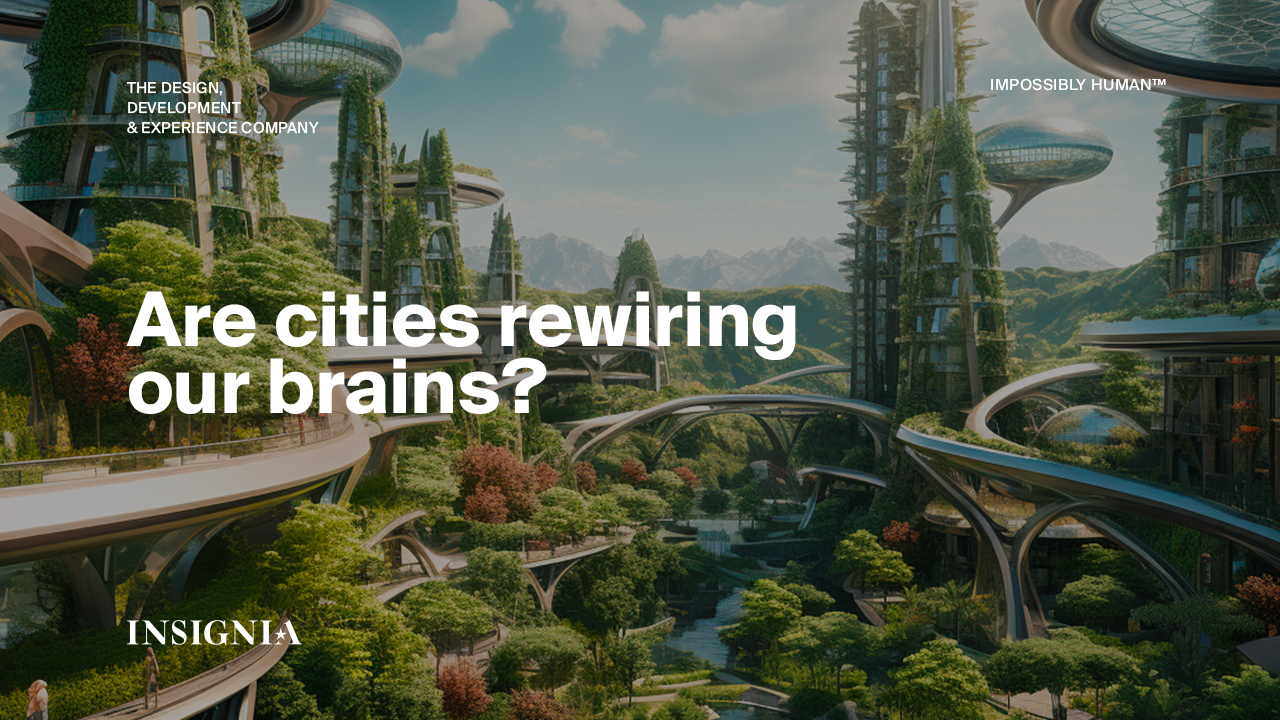Some of the earliest cities in the world emerged in Mesopotamia, modern-day Iraq, around 6000 years BCE.
Babylon was among them.
Distinguished for its size and early development of the urban blueprint, its archaeological remnants include external and internal city walls, gates, palaces, and temples, all of which are a testament to the roots of the contemporary metropolis.
It is no secret that the layout and architecture of a city are key in sculpting the experiences and well-being of its inhabitants. But, beyond fostering a temporary sense of contentment, we now know that urban design has deeper physiological implications, influencing happiness within the urban context. This understanding is at the heart of what we term “Dopamine Cities”: Urban environments crafted to promote positive neurotransmitter activity and activate the brain’s reward system.
Dopamine, the “feel-good” neurotransmitter, is crucial in mood regulation, motivation, and pleasure, reinforcing behaviors with positive outcomes. Cities, as multifaceted ecosystems, can stimulate dopamine release through smart design that enhances the overall urban experience. The High Line in New York City, an urban park built on an elevated section of a disused railroad, does precisely this by offering an escape from bustling city streets and providing a unique perspective of the urban landscape.
Serotonin, another neurotransmitter linked to mood regulation, is boosted in natural settings. Being in green spaces positively affects the brain, leading to increased serotonin production. This interaction is not just visually pleasing but also beneficial for mood and emotional well-being. Singapore’s Gardens by the Bay is a splendid example. The extensive park, famous for its Supertree structures and cloud forest, immerses visitors in a much-needed natural environment.
Developing walkable, pedestrian-friendly areas encourages physical activity and the release of endorphins. Known as the body’s natural opioids, endorphins create feelings of happiness and act as natural pain relievers. Thoughtfully designed public spaces encourage community interaction and make physical activity a regular part of life. Take Copenhagen’s extensive cycling infrastructure and pedestrian-friendly streets. The city has focused on developing a network of bike lanes and pedestrian zones that encourage movement, not only reducing traffic congestion but also promoting the release of endorphins.
And the social dynamics of a metropolis also play a crucial role. Social interaction and community involvement release oxytocin, the “love hormone.” Designing public areas for socializing and community activities, like Melbourne’s multifunctional Federation Square, strengthens resident connections and creates a supportive urban environment.
But why limit the scope of this exploration to cities?
NEOM, in Saudi Arabia, is an entire region that will incorporate technology and design tailored to enhance the well-being and happiness of residents and visitors. From green spaces that merge seamlessly with urban architecture and vast swathes of unspoiled natural habitat to smart infrastructure that prioritizes pedestrian movement, it is poised to be a living example of how urban environments can actively contribute to the physical and mental health of the populace.
Yet let us return to Babylon, for now, and ask whether it truly needed its Hanging Gardens to thrive.
Strictly speaking, no.
However, if we consider whether these gardens were essential in inspiring Babylon’s artists, writers, and thinkers, thereby transforming the city into the creative hub of one of history’s most influential empires, the answer leans towards yes.
Today’s urban designers, whether they are based in Europe, the Americas, or NEOM, share a continuous lineage with their Babylonian predecessors. By incorporating green spaces, enhancing walkability, investing in architectural splendor, and fostering community engagement, the places in which we live have evolved into dynamic hubs that support the mental health, happiness, and productivity of residents.
One can only imagine how, as our understanding of neuroscience evolves, urban design can be further refined to elicit ever-greater aggregates of happiness.
Insignia Worldwide is proud to be a design, development, and experience partner for key projects across NEOM.
